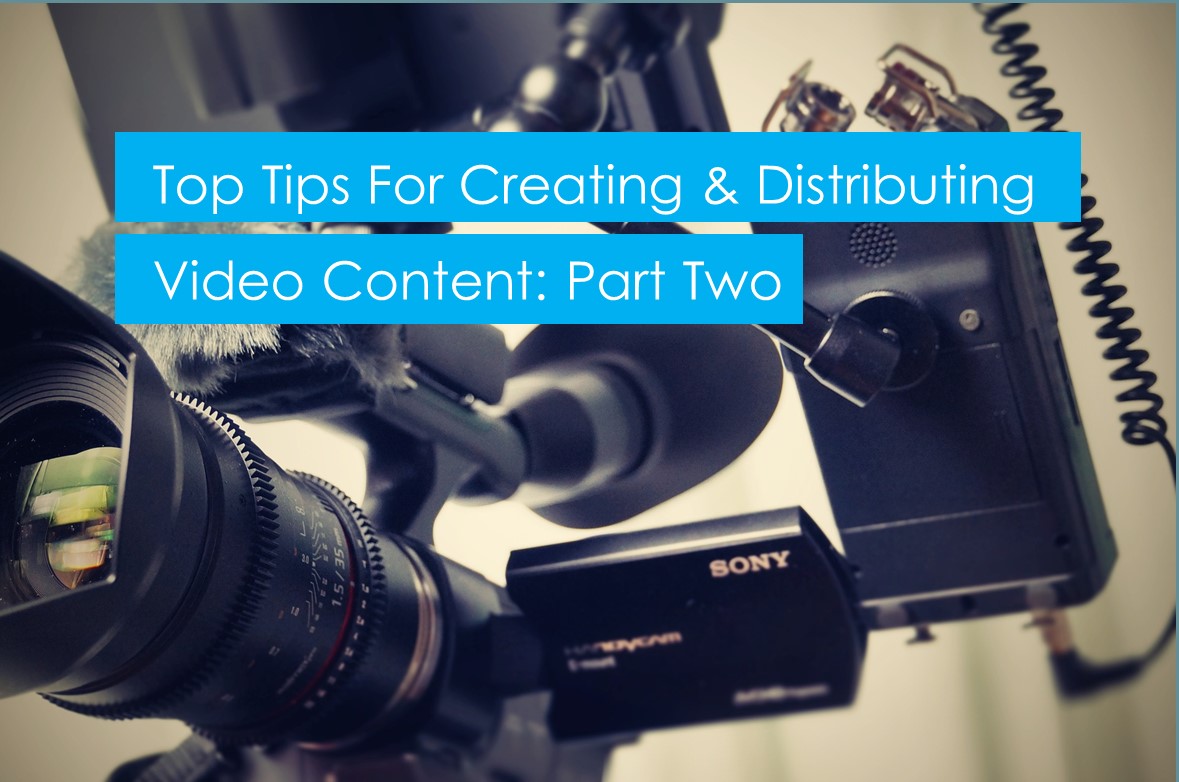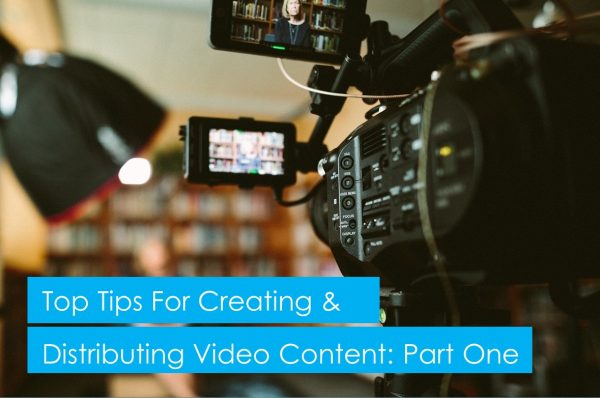Top tips for creating and distributing video content: part 2/3
Our recent Leicester Digital Lockdown webinar from Head of Social Media, Chris Dowse, covered everything you need to know to start creating video content for your business.
Video is the fastest growing format online, with the highest levels of engagement, making it an important channel for brands to utilise.
We’ve put together a handy round-up of the key points covered in the webinar.
In part two of three blog posts covering the webinar, we highlight the main points to consider regarding video size, length, aspect ratio and captions.
You can catch up on part one, which covers creative and media budgets, or register to access a recording of the webinar.

Video size, aspect ratio and length
Chris says: “The size, aspect ratio and length of your video should always be considered when developing your content ideas, as they will have an impact on its performance in some shape or form.
“When it comes to video ads, each channel has its own specifications for video content which they make available on their sites. If you know for example that you want to use Facebook and Instagram ads, it’s worth making yourself familiar with what you’ll need before you develop your brief.”
- Size – has two meanings, it refers to the number of pixels (for example 1920 x 1080) and file size (10MB for example)
- Aspect ratio – does your video need to be landscape, portrait or square?
- Length – how long in minutes and seconds will your video be?
Each channel has its own ad specifications available to access online:
Key points to consider when creating video for social media:
“Social media can be a headache when thinking about creative requirements for the first time. Traditionally, 16:9 was pretty much the standard ratio (the same as your TV), but portrait filming is now as important as landscape because of Instagram stories,” explains Chris.
- Brief your film crew/video agency on where you intend to use the video at the storyboard stage.
- Aspect ratios and crops will vary by platform and device, cover the basics and you’ll be able to adapt for other channels – landscape can often be cropped down to square if you frame up with that in mind.
- Portrait is increasingly important – Instagram stories is the fastest growing ad placement on Instagram in both daily user interactions and therefore ad inventory growth.
- Getting portrait edits will also allow you to use the footage for more platforms than just Instagram:
Facebook and messenger stories
Snapchat ads
Pinterest video pins
Twitter ads (with a slight tweak to 4:5)
- Taking advantage of portrait allows you to dominate more of a screen and stand a better chance of getting their attention
- Check out these useful resources for aspect ratios and pixel sizes across all social media channels:
https://sproutsocial.com/insights/social-media-video-specs-guide/
http://veed.io/blog/social-media-video-aspect-ratios/

Finding the perfect length for your video
“How long should the video be? No longer than it needs to be,” says Chris. “but keep in mind that the first three to five seconds are key to keeping your user viewing.”
- “We know that 65% of people who watch the first three seconds of a video will watch for at least ten seconds and 45% continue watching for thirty seconds,” Facebook
- Facebook have the option to only pay for a ThruView (15 seconds or more viewed)
- TrueView reach ads on YouTube allow a user to skip after just 5 seconds
- Non-skippable in stream YouTube ads can be 6-15 seconds long and run before, during or after the video content
- If you can tell your story in 6 seconds or less, you can use YouTube bumpers. You could have a longer edit but also break it up into a series of 6 second videos.
Chris adds: “All platforms will provide you with stats on how many people make it to various percentages and time lengths etc. This enables you to work out your cost per view figures and see the audience who are most engaged with your content, giving you a better idea of how successful your video campaign is.”
When do you need captions for your video?
“Captions are now a vital part of your video’s content and as most users view the content without sound, captions are the best way to improve reach and engagement. Captions get 15% more shares and 26% more CTA click throughs,” Chris notes.
- Back in 2016 we were told 85% of video on Facebook was watched without sound
- Research collected by Facebook found that 76% of video ads however needed sound to be understood
- In May 2018, Google Chrome updated its settings to only allow autoplay for video advertisements if the video is automatically muted, doesn’t contain audio, or if the user has chosen to receive sound by clicking on the content
- Google stated that advertisers should “consider starting with muted content and let the user unmute if they are interested in exploring more.”
- A recent Facebook experiment reported that the average reach of a captioned video on the social platform was 16% higher than the same video without any supplemental text
- Over 5% of the world’s population or 466 million people are deaf or hard of hearing. If your brand advocates for inclusivity throughout its marketing, you should strive to make all of your content as accessible to as many people as possible
Captioning existing video content
YouTube – Upload your video to YouTube and it will caption your content automatically. These captions can be added and then reviewed and edited within the Video Manager settings under Subtitles and CC.
Quicc app – If you shot video on phone and want to add and edit captions. Simply upload a video, it plays through and auto detects to create the captions, which you can then edit. A small subscription cost is required, but does a decent job.
Sign up for our next Leicester Digital Lockdown webinars or register to watch the replay. Alternatively, read our blog post on the digital marketing tactics that are working for our clients during the COVID-19 outbreak.




